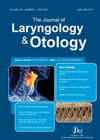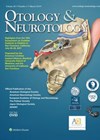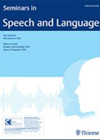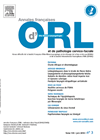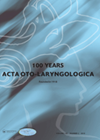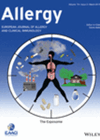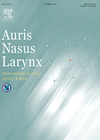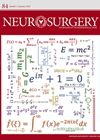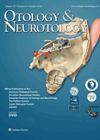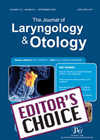
Journal Reviews
Systemic steroid therapy for reduction of macrophage migration inhibition factor in the control of nasal polyposis
It is believed that macrophage migration inhibitory factor mediates inflammation by stimulating the release of other pro-inflammatory cytokines. The use of systemic steroids in control of nasal polyposis is an established treatment. In this study the authors have aimed at...
The role of cVEMPs in the diagnosis of Meniere’s disease
This study sets out to determine the most useful metrics to use from cervical-vestibular evoked myogenic potential (c-VEMP) tests when the diagnosis of Meniere’s disease (MD) is unclear, or as a follow-up tool. It is known that cVEMPs can detect...
This is what SLTs can do for mild TBI: presenting a care model
The authors of this article estimate there are around six-to-eight million people who sustain a mild traumatic brain injury (mTBI) per annum in the United States (US) as a consequence of sports injuries, traffic accidents, military service-related injuries, falls, assaults...
The GP and the ear
General practitioners are the first members of the medical community to deal with ear problems. In this survey, 11 GPs examined 124 patients using a regular otoscope and a video-otoscope and reported their findings in a 10-item table. The same...
Peer-support group for people with a hearing loss
Peer-support groups’ (PSGs) involvement in rehabilitation of people with different health issues can have a very positive impact on the patients’ wellbeing as showed in a various literature on the subject. This study involves analysis of data from previous studies...
Is there hope of hearing for postmeningitic patients deemed unsuitable for a cochlear implant?
Rehabilitation of patients with profound hearing loss deemed unsuitable for cochlear implants is challenging. An auditory brainstem implant (ABI) is a viable option for these patients. This paper evaluates auditory and speech perception outcome measures following ABI in 10 postmeningitic...
CRSwNP and smell – is it just the obstruction?
Anosmia and hyposmia are symptoms of CRS both with and without nasal polyps and can significantly affect quality of life. The nature of anosmia/hyposmia is thought to be both sensory-neural and conductive. These authors studied a mouse model in which...
Valsalva manoeuvre treatment of otitis media with effusion in adults
Otitis media with effusion (OME) is common in children but has a low prevalence in adults. There is some evidence to advocate middle ear inflation as a successful treatment for children with OME. This form of treatment is also recommended...
Acoustic schwannoma regression post-Gamma Knife treatment
In this retrospective study the authors studied the optimal interval following radiosurgery for differentiating between true growth of tumour versus pseudoprogression using serial volumetric data. A total of 118 patients with a median tumour volume of 0.74cm3 at Gamma Knife...
Can and should vestibular schwannoma surgery be carried out via the endoscopic transcanal approach?
The extent and scope of endoscopic ear surgery has rapidly progressed in recent years, and this paper, from one of the leading proponents of this technique, reports on the outcomes of a case series of patients who have had total...
A trial of house dust mite sublingual tablet in children with allergic rhinitis
The house dust mite (HDM) is one of the commonest causative agents in allergic rhinitis (AR), affecting patients across all demographics. Recently, sublingual immunotherapy (SLIT) has been shown in clinical trials and meta-analysis to be effective compared to placebo in...
How effective and safe is audiologist-led screening of acoustic neuroma in patients with asymmetrical hearing loss and unilateral tinnitus?
About two out of 100 patients presenting with asymmetric hearing and unilateral tinnitus have acoustic neuroma. The traditional method in which these patients first attend a clinician and then undergo screening through an MRI, can be expensive and prolong the...

